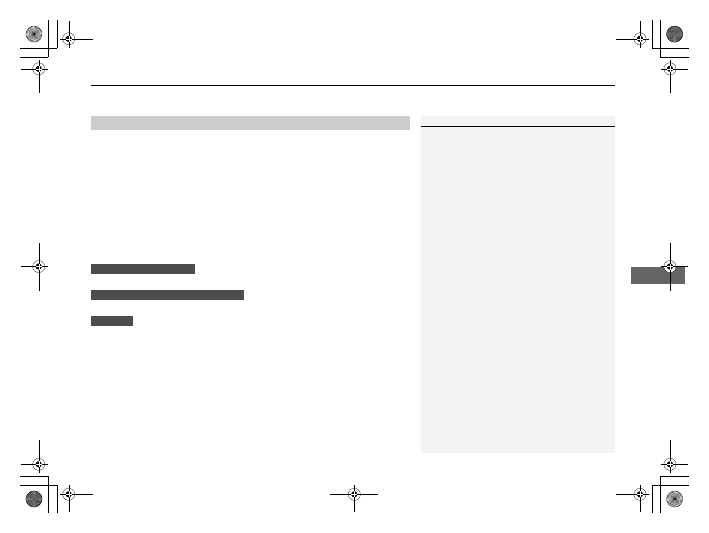
ENGINE START/STOP- Page 485
2021 Honda Civic Hatchback Owners Manual
Table of Contents

Continued
483
uu
When Driving
u
Tire Pressure Monitoring System (TPMS)
*
Driving
You must start TPMS calibration every time you:
•
Adjust the pressure in one or more tires.
•
Rotate the tires.
•
Replace one or more tires.
Before calibrating the TPMS:
•
Set the cold tire pressure in all four tires.
2
Make sure:
•
The vehicle is at a complete stop.
•
The shift lever is in
(
N
.
•
The shift lever is in
(
P
.
•
The ignition switch is in ON
(
w
*1
.
*1: Models with the smart entry system have an
ENGINE START/STOP
button instead of an
ignition switch.
■
TPMS Calibration
1
TPMS cannot be calibrated if a compact spare tire
*
is
installed.
The calibration process requires approximately 30
minutes of cumulative driving at speeds between 30-
65 mph (48-105 km/h).
During this period, if the ignition is turned on and the
vehicle is not moved within 45 seconds, you may
notice the low tire pressure/TPMS indicator comes on
briefly. This is normal and indicates that the
calibration process is not yet complete.
If the tire chains are installed, remove them before
calibrating the TPMS.
If the low tire pressure/TPMS indicator comes on even
when the properly inflated specified regular tires are
installed, have your vehicle checked by a dealer.
We recommend that the tires be replaced with the
same brand, model, and size as the originals. Ask a
dealer for details.
The indicators for the Adaptive Cruise Control (ACC)
with Low Speed Follow, Road Departure Mitigation
(RDM), Vehicle Stability Assist
TM
(VSA
®
) System,
Vehicle Stability Assist
TM
(VSA
®
) OFF, low tire
Pressure/TPMS and Collision Mitigation Braking
System
TM
(CMBS
TM
) may come on after reconnecting
the battery. Drive a short distance at more than 12
mph (20 km/h). The indicator should go off. If it does
not, have your vehicle checked by a dealer.
Manual transmission models
Continuously variable transmission models
All models
* Not available on all models
21 CIVIC 5D HUM-31TGG6400_01.book 483 ページ 2020年8月28日 金曜日 午後1時48分
Detailed Information for 2021 Honda Civic Hatchback Owners Manual
Lists of information found in 2021 Honda Civic Hatchback Owners Manual - Page 485
- Adjust the pressure in one or more tires.
- Rotate the tires.
- Replace one or more tires.
- Set the cold tire pressure in all four tires.
- The vehicle is at a complete stop.
- The shift lever is in ( N .
- The shift lever is in ( P .
- The ignition switch is in ON ( w *1 .
